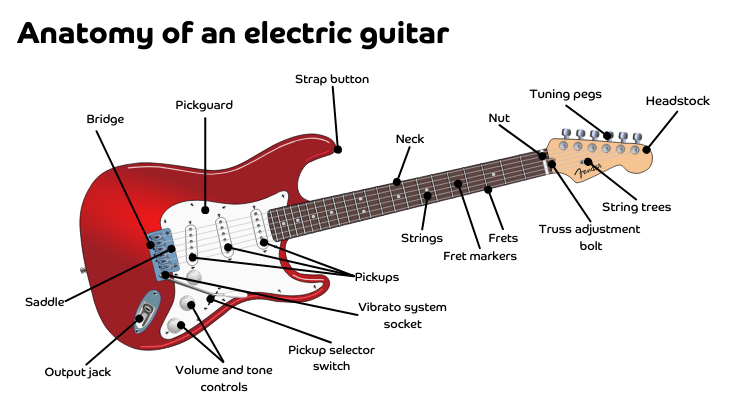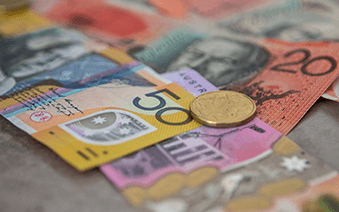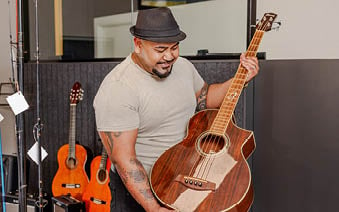The essential guide to buying second-hand music instruments
You’d be surprised how common buying second-hand instruments is – a lot of your favourite musicians love to scoop up a pre-loved guitar or keyboard to take on tour.
Luckily buying second-hand musical instruments nowadays isn’t as stressful as you think and it doesn’t absorb your savings account – so don’t start cancelling your future gigs before you’ve even started the journey.
The benefits of shopping second-hand instruments
There’s nothing more exciting than discovering an old guitar that just sounds incredible. There’s a reason for that: instruments also don’t sound the way they should when bought from the shop brand new.
An instrument matures over time, needing to be ‘played in’, so picking one up with some history is potentially not only going to improve the sound but the longevity if the build is of high quality.
What to look out for (by instrument)
While there are usually a handful of common things to check when buying a second-hand instrument, it can depend on what you’re buying.
Here are a few tips on what to look out for when buying a used instrument.
Buying a second-hand bass or electric guitar
- The first thing to know when buying a second-hand electric guitar or used bass is knowing whether the pick-ups are in working order – these are the square or circular parts with the metal circles that pick up the vibrations of the strings.
For acoustic guitars, it’s pretty simple to test as there aren’t any visible pickups, but with anything electric you’ll need to be able to plug the guitar into a working amp to make sure the pickups are in sound working order.
- While it’s still plugged in, check the jack, volume pots and switches and listen for the changes. If you notice crackles as you turn the pots or have a continual crackle as you move with the cord plugged into the jack – or nothing at all – there could be issues in the electronics that need repairing.
- Make sure the saddle – this is the thin strip of material where you lock in your strings – isn’t damaged. This can cause the guitar to fall out of tune.
- Check the frets and make sure the strings can reach them and that there are no dents, as this can be a costly fix.
- Play with the tuners at the head of the guitar. This is crucial to see if they can retain the tension of your strings. Change the tune as well and see how the guitar handles it.
- Check any cracks along the side of the neck of the guitar. Yhis can happen over time as the wood and metal expands and contracts.
- Assume you’ll need to change the strings when buying a second-hand guitar.
- Check the body to make sure the neck is straight and not warped. You can check this by holding the guitar and looking down the neck to see if the wood has twisted. A warped neck is not worth the purchase. Wood can change its shape, so it’s best to have a good look.
- Check the tuners at the head of the guitar to see if they’re wobbly. If these seem to lack strength it could cause problems down the line.
- If you can tune the guitar with a tuner you have – or worst case, a smartphone app – and get to play a little, see if the strings stay in tune. Loose tuners that can’t hold the strings will make it very problematic playing.
- Take a look at the frets to see if there is any damage to them. You’ll be pushing harder on acoustic strings so you’ll want to make sure there aren’t chips or broken frets.
- Look for any cracks in the body of the guitar. Scratches don’t affect the sound, and might even look nice, but cracks in the neck can dramatically change the sound of an acoustic guitar.
- Make sure the size of violin is right for you. For anyone aged 12 and above, the 4/4 size is for you. If you’re buying a violin for someone under the age of 12, check to make sure you’re buying the right size for them.
- Check for any cracks in the wood. These can grow over time, slowly degrading the instrument.
- Try moving the tuning pegs and see how easily they move. A violin that hasn’t been played in a while can be stiff or too easy to adjust. If they don’t improve after a few plays with the violin, it might need to be examined.
- Ensure the neck is straight and there’s no warping. It seems simple, but it’s very important in making sure you get the correct sound when you play.
- Make sure the bow included can be adjusted for tightness via the screw at the end of the bow. Loosened bow hairs should have a bit of an arch to them.
- An aged cello has just as much to contribute as a newly bought one – and you’ll save a lot doing it. A well-maintained instrument can last decades.
- If you know how to play it, then play it in store. You’ll get a sense of how the cello sounds. While some cellos take a while to ‘warm up’ with continued play, you’ll at least get a good idea of how it feels.
- Cello bows come in different forms, from the material to the shape itself. Regardless of the bow that comes with the cello, check to make sure the screw at the end can be loosened.
- Just like violins, cellos come in different sizes depending on the age of the player. Make sure the instrument you’re looking at is right for you.
- Examine the instrument for any rust and dents. Scratches don’t affect the sound, so if you don’t mind these light imperfections you’re good to go.
- A crack in the bell – that’s the body of the trumpet – can be a problem. Try to avoid buying a trumpet with visible cracks in the frame of the instrument to save a lot of hassle.
- Check that every single key of the flute can completely close over the holes – if not, you aren’t going to have a strong sound from the instrument.
- While small dents shouldn’t affect the sound as much, major dents can.
- Check the pads underneath the keys to make sure they’re not torn.
- If you’re just starting out and need to learn, entry-level drums should do fine.
- Check the cymbals for any cracks – a cracked cymbal is not worth the purchase.
- Test them out. While the drum might just need to be properly tuned, if there’s an odd sound coming from the drums, it could be possible the drums aren’t round.
- It might seem obvious to make sure the drums are round, but a non-round drum can have issues with the sound and tuning.
- If you’re buying a second-hand electric drum kit, test them out. Some drum pads can break and be a serious drawback when trying to order a replacement. If you’re purchasing from a second-hand store, check to make sure there’s a warranty.
- A little rust isn’t too bad, but a lot of rust is. Try to avoid purchasing the kit if there is a lot of rust on the drums.
- If there are any parts missing, take note. You can almost always replace these, but some bits are more costly than others and might raise the total price to get everything in working order.
Additional checks
Your best source for knowing about how a brand performs is hopping online and asking questions – a lot of them if you need to.
Check out online forums like Whirlpool and Aussie Guitar Gear Heads and read up on what other musicians think about the brand and model. Head into a music shop and ask the attendant about what they recommend.
It might be that you’re looking to recreate a particular sound from a band. What you are looking for will help you determine what to ask.
Additional warranty
Check whether the instrument comes with a warranty or guarantee.
Some purchases come with a still valid warranty from the day of purchase (though these might also require you have the original proof of purchase or receipt).
If you’re buying from a Facebook group, chances are there’s no way to check the warranty ahead of time so you best be confident there’s no issues once you walk away – no refunds can be a burden.
There are retailers with built-in warranty policies which can give that extra piece of mind. Most Cash Converters purchases are covered by a 90-day warranty for faults.
Put it to use on the spot
The best way to know is to try it out, right? Grab those drumsticks or violin bow and give it a shot. If you’ve played the instrument before, it should feel comfortable when you play it.
Where to buy used musical instruments
Nowadays there are plenty of ways to buy a used violin, guitar or trumpet. Of course there are a lot of resellers on social media groups like Facebook, through friend groups, and even online stores. Some of these rely on a bit more trust in the seller of the instrument.
Second-hand stores also have a wider selection of options available to choose from. With a larger inventory size, you’ll feel less pressure making that all-important decision. You can also test the item in-store. Some second-hand stores have a warranty so if you take the instrument home and there’s something wrong with it, you’re not stuck with an item you can’t use.
If you’re unsure about where to start, Cash Converters has a wide variety of second-hand musical instruments to let you browse around without the awkward Facebook group meetups. Plus there are lots of knowledgeable staff in stores who have handy information to share about all things instruments, helping you to make the right decision.
The information contained in this blog is general advice only and does not take your specific circumstance into consideration. You should assess your own financial position, objectives, and requirements before making any financial decisions.
Australian Credit Licence 391436. Subject to lending criteria being assessed. Check our TMD.



